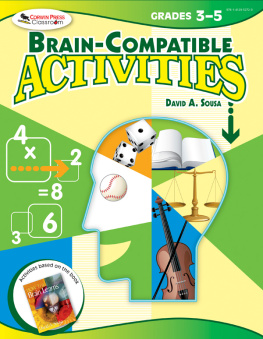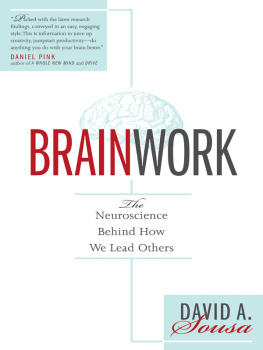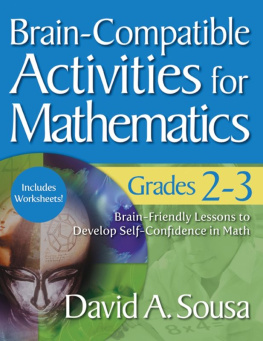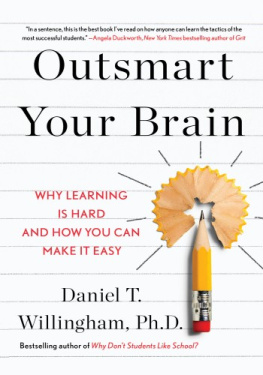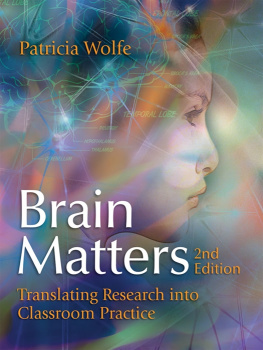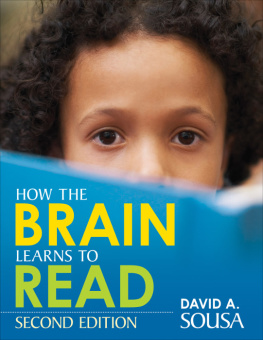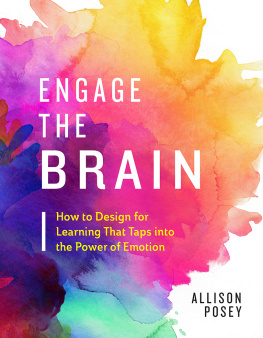Copyright 2008 by Corwin.
First Skyhorse Publishing edition 2016.
All rights reserved. No part of this book may be reproduced in any manner without the express written consent of the publisher, except in the case of brief excerpts in critical reviews or articles. All inquiries should be addressed to Skyhorse Publishing, 307 West 36th Street, 11th Floor, New York, NY 10018.
Skyhorse Publishing books may be purchased in bulk at special discounts for sales promotion, corporate gifts, fund-raising, or educational purposes. Special editions can also be created to specifications. For details, contact the Special Sales Department, Skyhorse Publishing, 307 West 36th Street, 11th Floor, New York, NY 10018 or .
Skyhorse and Skyhorse Publishing are registered trademarks of Skyhorse Publishing, Inc., a Delaware corporation.
Visit our website at www.skyhorsepublishing.com.
10 9 8 7 6 5 4 3 2 1
Library of Congress Cataloging-in-Publication Data is available on file.
Cover design by Lisa Riley
Print ISBN: 978-1-63450-371-6
Ebook ISBN: 978-1-5107-0113-7
Printed in China

TABLE OF CONTENTS
 | Activities and reproducibles |
 | Activities and reproducibles |
 | Activities and reproducibles |
 | Activities and reproducibles |
 | Activities and reproducibles |
Connections to Standards
This chart shows the national academic standards that are covered in each chapter.
| LANGUAGE ARTS | Standards are covered on pages |
| Read a wide range of print and nonprint texts to build an understanding of texts, of self, and of the cultures of the United States and the world; to acquire new information; to respond to needs and demands of society and the workplace; and for personal fulfillment (includes fiction and nonfiction, classic, and contemporary works). | 22 |
| Adjust the use of spoken, written, and visual language (e.g., conventions, style, vocabulary) to communicate effectively with a variety of audiences and for different purposes. | 13 |
| Apply knowledge of language structure, language conventions (e.g., spelling and punctuation), media techniques, figurative language, and genre to create, critique, and discuss print and nonprint texts. | 10 |
| Conduct research on issues and interests by generating ideas and questions and by posing problems. Gather, evaluate, and synthesize data from a variety of sources (e.g., print and nonprint texts, artifacts, people) to communicate discoveries in ways that suit the purpose and audience. | 22 |
| MATHEMATICS | Standards are covered on pages |
| Numbers and OperationsUnderstand numbers, ways of representing numbers, relationships among numbers, and number systems. | 39 |
| AlgebraUse mathematical models to represent and understand quantitative relationships. | 27 |
| GeometryUse visualization, spatial reasoning, and geometric modeling to solve problems. | 32 |
| MeasurementUnderstand measurable attributes of objects and the units, systems, and processes of measurement. | 35 |
| SOCIAL STUDIES | Standards are covered on pages |
| Understand individual development and identity. | 54 |
| Understand how people organize for the production, distribution, and consumption of goods and services. | 57 |
| Understand relationships among science, technology, and society. | 48 |
| SCIENCE | Standards are covered on pages |
| Science as InquiryAbility to conduct scientific inquiry. | 70 |
| Life ScienceUnderstand characteristics of organisms. | 63 |
| Life ScienceUnderstand organisms and environments. | 63 |
| Earth and Space ScienceUnderstand changes in the earth and sky | 74 |
| Science in Personal and Social PerspectivesUnderstand populations, resources, and environments. | 57 |
Introduction
B rain-compatible activities are often louder and contain more movement than traditional lessons. Research has shown that purposeful talking and movement encourage retention of new learning. While this may seem out of your comfort zone at first, good classroom management and a willingness to try new things is all that is needed to implement these activities in any classroom. Once you and your students become accustomed to brain-compatible strategies, you will find it difficult to go back to more traditional teaching methods. Students (and teachers!) enjoy lessons that actively involve their brains, and the brains that are actively involved are the brains that learn.
It has been estimated that teachers make over 1,600 decisions per day. As professional educators, it is our job to be familiar with current research to make sure those decisions count for our students. This book is filled with activities that are supported by brain research. These activities will help increase learning because they are structured to maximize the brains learning potential.
How to Use This Book
The activities in this book are designed using a brain-compatible lesson plan format. There are nine components of the plan, but not all nine are necessary for every lesson. Those components that are most relevant to the learning objective should be emphasized.
Anticipatory set
Learning objective
Purpose
Input
Modeling
Check for understanding
Guided practice
Closure
Independent practice
Each of the components is described in detail in my book titled How the Brain Learns, Third Edition (2006). Refer to it for more brain-compatible research and other teaching strategies.
When using the activities in this book, read through the activity first. Then begin the preparations for the lesson. Make sure to follow the lesson plan format to ensure maximum learning potential. However, be flexible enough to meet the needs of all learners in your class. A positive classroom climate is essential for retention.
Put It Into Practice
H ow the brain learns has been of particular interest to teachers for centuries. Now, in the twenty-first century, there is new hope that our understanding of this remarkable process called teaching and learning will improve dramatically. A major source of that understanding is coming from the sophisticated medical instruments that allow scientists to peer inside the livingand learningbrain.
As we examine the clues that this research yields about learning, we recognize its importance to the teaching profession. Every day teachers enter their classrooms with lesson plans, experience, and the hope that what they are about to present will be understood, remembered, and useful to their students. The extent that this hope is realized depends largely on the knowledge base teachers use in designing those plans and, perhaps more important, in the strategies and techniques they select for instruction. Teachers try to change the human brain every day. The more they know about how it learns, the more successful they will be.

